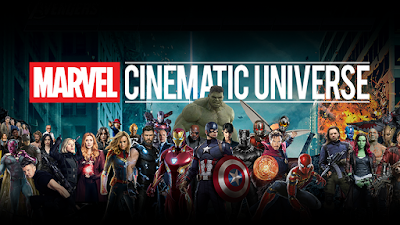Peacock Is Here - But Still Has A (Long) Ways To Go
Peacock (NBCUniversal/Comcast) was the last of the major
streaming services to launch in the US, launching nationally on 15th
July. It was already available to Comcast’s Xfinity X1 and Flex cable customers
since April, but since the national launch, we now have some official numbers to
help us understand how Peacock has been received - and it’s a mixed bag!
Since April, Peacock has added 10 million subscribers to the
service, although most of these would likely be through Comcast’s cable
package. 10 million is a good number in all honesty, but still falls well
behind Disney+ who gained 10 million subscribers on its first day (that number
is still astonishing). We shouldn’t really expect Peacock to be challenging
those numbers, but their subscriber growth since national launch tells a more
humble story. In its first 6 days, Peacock added 1.5 million subscribers, which
is by no means a failure, but I’m sure Comcast wanted a stronger launch, especially
considering the service has a free version (which I’m sure accounts for most of
their subscribers).
Since Peacock was announced, I’ve always said it has a
strong chance of succeeding, especially due to the fact the service has two
revenue streams – ads and paid subscriptions. However it’s becoming ever clearer
how tough it will be to compete in such a crowded market. There is of course a
lot more to come from the service, from original content all the way to
integrating live TV, but it still needs to do more to win over consumers.
For one, their marketing needs to be more effective and
informative, and clearly establish to consumers what Peacock is, and why it’s
so unique. Even though it’s not available in the UK, I’ve come across HBO’s
social media activity which has been fun and informative. With a free version,
Peacock need to double down on exploiting the feature, as there is no reason
not to subscribe! But apart from their marketing, arguably the biggest issue
(and yes it is an issue) they need to address is their distribution strategy.
Right now, Peacock is unavailable on Roku and Amazon Fire Stick, two of the
biggest streaming video players in the world, meaning millions of consumers
aren’t able to access the app through their TV. On top of that, NBCUniversal
have made the nonsensical decision to block HDMI connectivity for the app i.e.
users can’t stream Peacock through their TV from their laptop via a HDMI
connection. These are two big issues which need to be addressed, as it just
makes accessibility a needless problem.
It will be interesting to see where Peacock is a year from now, especially once the product matures and becomes more accessible. I feel it’s important to fully understand what success looks like for NBCUniversal when it comes to Peacock, as perhaps their goal might be to integrate broadcast TV with the service instead of treating it like a completely separate offering. But until we find out more, I guess I’ll just keep on wondering why they decided to name it Peacock?




Comments
Post a Comment